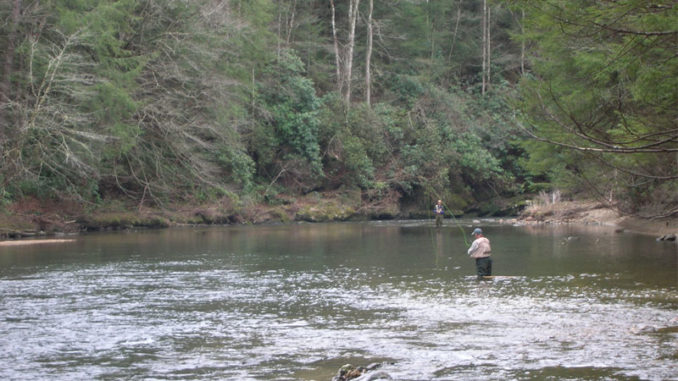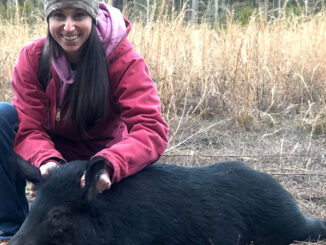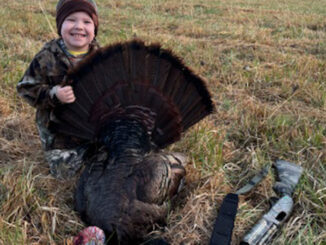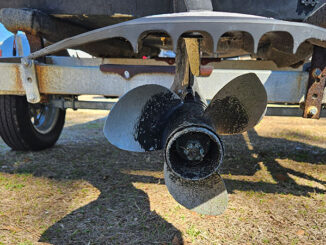
Locating productive water is essential
Choosing productive water to fish is as important as your fly selection; fishermen need to learn to “read the water.”
If there is a large, submerged rock, the current will usually bulge over the top of it. Even a pool that appears featureless will have some bottom contours that hold most of the fish. A couple of drifts will alert you to the features of the pool.
It is vital to note that structure in the water affects the velocity. This also applies to the bottom contours. A slight dip in the bottom will often allow the swifter current to pass over it, providing a safe haven for trout. From there, they can move slightly into the swifter water to take an insect, then quickly drop back into the slower water to conserve energy.
Good casting is key
Casting upstream from these features allows the weighted fly to drop to the fish’s level by the time it reaches him. Failure to cast far enough above the contours or other features results in a fruitless drift. This gives the impression that no fish are present. This is a common error among novice anglers and one that bears stressing.
Nymphing can be demanding and very tiring. Holding the rod high when “high sticking” places a strain on the shoulders and back. A day on the water will be demanding when nymphing but is well worth the investment of effort.
Due to the sub-surface nature of fishing with nymphs, heavier and shorter leaders may be used. This will be an advantage when playing and landing the larger trout that this method will yield. It is possible to fish two nymphs of different patterns, but may result in some tangles. If you choose to do this, once you see that one fly is more productive, you may choose to use only that pattern.




Be the first to comment